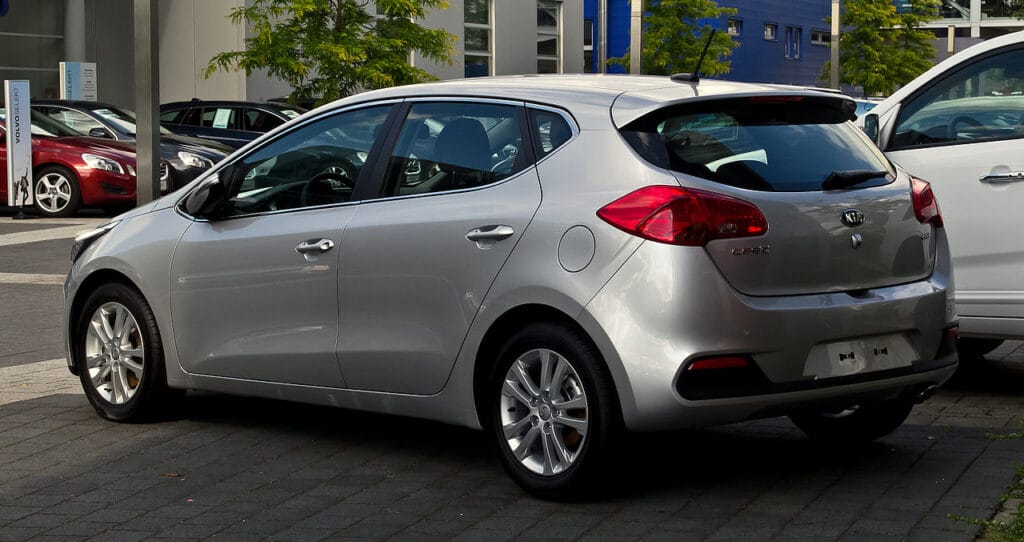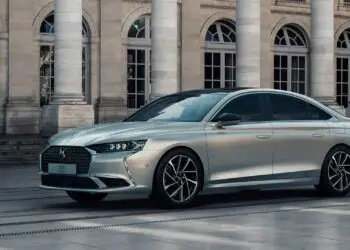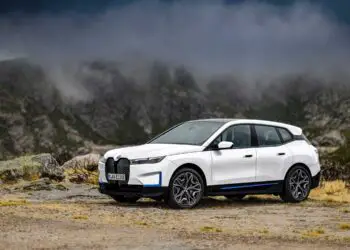At the beginning of December 2020, the time had come that for a good nine months I had been back in a car that was not at least a plug-in hybrid or an electric car. As a driver, of course. As a co-driver, I am often still a passenger in combustion engines. But then you have less influence on that. At least if you want to get from A to B without having to walk. The vehicle of choice was a KIA Ceed 1.6 CRDi 48V iMT, which was made available to me for testing for a good two weeks.
However, since electric cars and PHEV are the focus here in the Elektroauto-News.net portal, there is no detailed test report on the slightly electrified diesel. Instead, I will record my impressions and initial information about the vehicle in this short article. Combine this with my experiences with a mild hybrid in everyday life and try to show why this makes at least more sense than a simple combustion/diesel. If you want to find out more about KIA’s “real” part-time electricians, I would recommend this article to you: “Test and driving report of the KIA Xceed 1.6 GDI PHEV DCT” because the focus here is much closer to our core reporting. It is also the case that the equipment and vehicles are quite similar apart from their drive. A look to the side is therefore more than permitted.
If you still want to find out something about mild hybrids, stay tuned and listen. You read that correctly: “listen in” , because I recorded the whole thing in a short podcast episode .
Mild hybrids just another type of hybrid / plug-in hybrid drive?

Before I go into the KIA Ceed 1.6 CRDi 48V iMT in particular, I would first like to explain a little about what you can expect from a mild hybrid. What all hybrid vehicles have in common is that they are powered by a combination of a combustion engine and an electric motor. Compared to mild hybrids, the main advantage of full hybrids lies in the fact that their two drive sources work completely independently of each other.
With mild hybrids, it is the case that they only use their electric motors to support the gasoline engine when accelerating and driving. To be clear, their electric motor is not able to drive the vehicle on its own. This is different with a hybrid / plug-in hybrid, here the pure electric motor can move the vehicle up to 60 km purely electrically (WLTP), depending on the battery size and efficiency. And yet a mild hybrid can help save fuel and protect the environment. The following can be briefly stated here:
- About 10 percent fewer consumption thanks to electrical assistance
- Lower currents than with full or plug-in hybrid
- Integrated or belt-driven starter generator as an electric motor
- An extended and more convenient start-stop system
So what does the mild hybrid electric motor actually do? It acts as a so-called starter generator that helps the combustion engine with its work. So this is able to contribute some power for a short time, in the starting phase of the combustion engine / diesel. He takes over completely in all cases, at least partially that of the starter. The driver hardly notices anything, the starting process feels like changing gears in a nimble automatic.
A starter generator can be placed in different positions on the car. KIA and Hyundai rely on a so-called belt starter generator (RSG), which uses the gap left by the missing alternator. From here the starter generator is connected to the crankshaft via a belt – hence the name. The advantage here is that it can be used in existing engine types.
The fuel savings are not to be set at the level of a PHEV or hybrid. On the contrary, the relief seems rather small. In the case of KIA’s mild hybrid system, about ten percent less consumption is expected thanks to electrical support. But more on that below. Because KIA decided in April 2020 to equip all diesels with a mild hybrid system. For good reason.
KIA equips all Ceed diesel variants with mild hybrid as standard
At the end of April 2020, KIA made the decision to equip all Ceed diesel variants with a 48-volt mild-hybrid system in the future. This also applies to my test car Ceed 1.6 CRDi 48V iMT, which was my guest at the beginning of December 2020 in the exterior color Blue Flame and the equipment line Spirit. This brought with it 100 kW / 136 PS and thus a little more power than the entry-level version with 84 kW / 115 PS. The mild-hybrid is for the entire model family, which includes the Shooting Brake ProCeed as well as Ceed, Ceed Sportswagon, and Xceed.
Briefly about the price classification. The mild hybrid from KIA came to a base price of 26,991.93 euros. The special equipment in the form of a leather package (867.56 euros), navigation package (867.56 euros), technology package (672.61 euros) and metallic paintwork (575.13 euros) have the total price including 16 percent VAT at 29,974, 79 euros raised. The environmental bonus / purchasing premium for electric cars or plug-in hybrids does not apply here, of course.
The comparison to the PHEV KIA XCeed 1.6 GDI PHEV DCT in the Spirit equipment line must be considered here. This brought it to a list price (still with 19% VAT) of 37,290.00 euros. Since the environmental bonus is deducted from the net list price, as well as the innovation bonus and you benefit from the currently lower VAT, a small calculation example:
- 37,290.00 euros – list price still with 19 percent VAT
- 31,336.13 euros – list price excluding VAT
- 23,836.13 euros – list price without VAT; after deduction of an environmental bonus of EUR 7,500
- 27,649.91 euros – list price with 16 percent VAT
If you compare the list price of the two variants: Mild hybrid – 26,991.93 euros / PHEV – 27,649.91 euros, there is a difference of “only” 657.98 euros in favor of the mild hybrid. For the comparatively low surcharge, however, you get a part-time stream that not only offers a little more power. Above all, it is able to drive up to 58 km purely electrically according to the NEDC. Even in practice I ended up with around 42 km, which could be covered purely electrically. Despite the main focus on mild hybrids, the choice of plug-in hybrids is clearly the better choice. Or what do you mean?
Details about the Ceed mild hybrid
Despite the fact that the decision in favor of the PHEV already seems to have been made, we want to take another look at the details of the mild hybrid drive on the Ceed together. The new diesel versions have a 48-volt electrical system including a lithium-ion battery and a 12 kW starter generator. The unit combines the functions of an electric motor and an alternator. It supports the driver when accelerating, but also serves to generate electricity and thus ensures highly efficient energy recovery.
As already mentioned, an electronic control system ensures seamless transitions between drive and charging mode. With regard to fuel savings, KIA indicates that, compared to the previous diesel versions, the CO2 emissions of the Ceed models are reduced by up to 10.7 percent, depending on the variant and version.
This is achieved because the mild hybrid system in combination with the intelligent gearbox enables so-called “sailing” or “free rolling”. In practice, this is shown by the fact that as soon as the driver takes his foot off the accelerator, the diesel engine switches off under certain driving conditions and the vehicle rolls over the lane without consuming any fuel, while only the electric motor is working. If the driver presses the accelerator again, the diesel switches on again almost imperceptibly. The quick and very comfortable engine start, in addition to fuel savings and additional torque, is another advantage of this technology, according to KIA about the mild hybrid system in the KIA Ceed.
Two weeks with the KIA Ceed 1.6 CRDi 48V iMT – a small conclusion!
The experiences with the KIA Ceed 1.6 CRDi 48V iMT shown here do not correspond to a classic test report. Nonetheless, I think it makes sense that we took a closer look at a mild hybrid. In addition, it is interesting to consider the differences as well as the advantages and disadvantages of the plug-in hybrid. But it is very clear at the moment – with the environmental bonus and innovation bonus still in effect – that the “low” surcharge to a PHEV is more than sensible in order to enjoy the benefits of driving a few km purely electrically.
At the point in time at which the funding programs or government subsidies are expected to expire, it can certainly be assumed that mild hybrids are no longer an exception. It’s the rule. Simply by committing to compliance with the CO2 fleet targets, every manufacturer will do its part to achieve them. With appropriate mild hybrid systems, this is done at least partially without driving up the price noticeably.
As a driver, you also save a little fuel. Incidentally, after a good 620 km of test drives in the country, through the city and on the motorway – with normal driving style – I achieved an average consumption of 4.9 with 5.1 liters / 100 km as standard in Eco mode. KIA specifies this with an average of 3.9 to 3.7 liters per 100 kilometers – under “laboratory conditions”. I am therefore quite satisfied with the distance that I have covered. But now I am interested, what are your experiences with mild hybrids?



